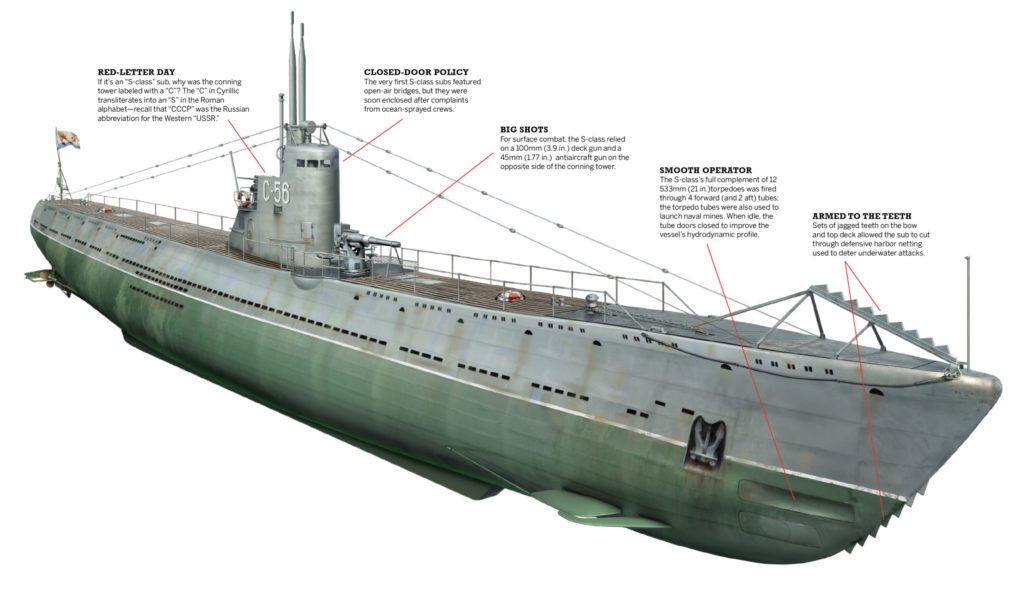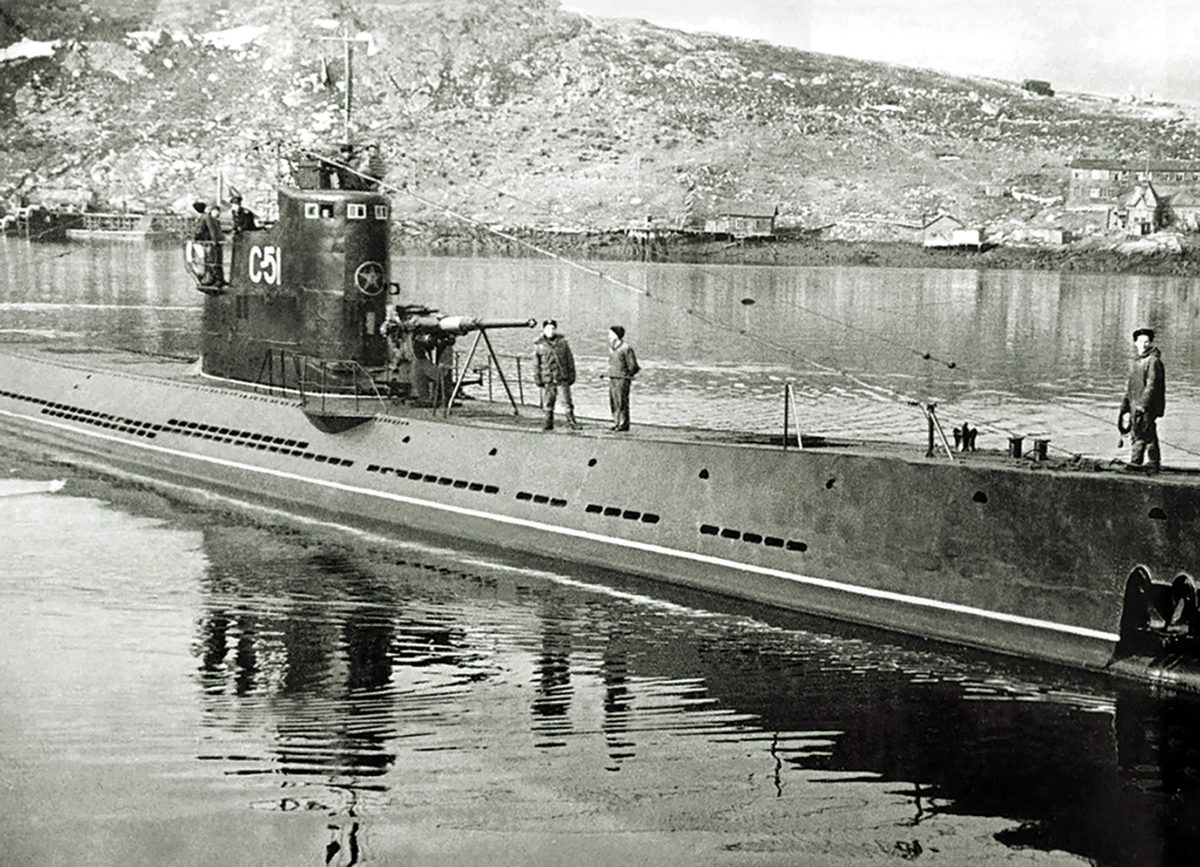When the Soviet Union began to build up and modernize its military in the early 1930s, it turned to a once and future foe to help them develop a new submarine: Germany. German weapons producers had successfully circumvented militarization restrictions in 1919’s Treaty of Versailles by opening foreign subsidiaries to do their bidding—so it was that a German company in the Netherlands developed plans for a sub that fit the Soviet requirements for a medium-sized, ocean-worthy vessel. In 1934 they delivered design specs to the Russians.
The Soviets produced the first of the new subs late the following year. In 1937, they redesignated the vessels as the “S-class,” the “S” standing for “medium,” though the West gave them the nickname “Stalinets”—“followers of Stalin.” Fast and maneuverable, S-class subs served ably in all four Soviet naval fleets and performed better than any other Russian sub in World War II, sinking seven enemy warships and more than 82,000 tons of merchant vessels.
The only surviving S-class—the decorated C-56, shown here—sank four ships during the war and resides in Vladivostok, Russia, as a historical ship museum.







